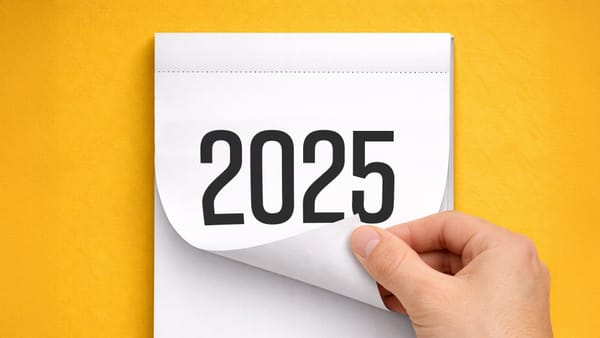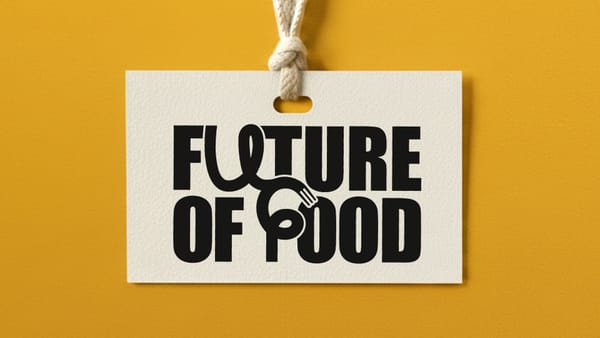UNSTUCK 005: Can Meaty Meat Meatness Put Impossible On More Dinner Tables?
Why positioning as parity is a dead end regardless of comms craftsmanship.
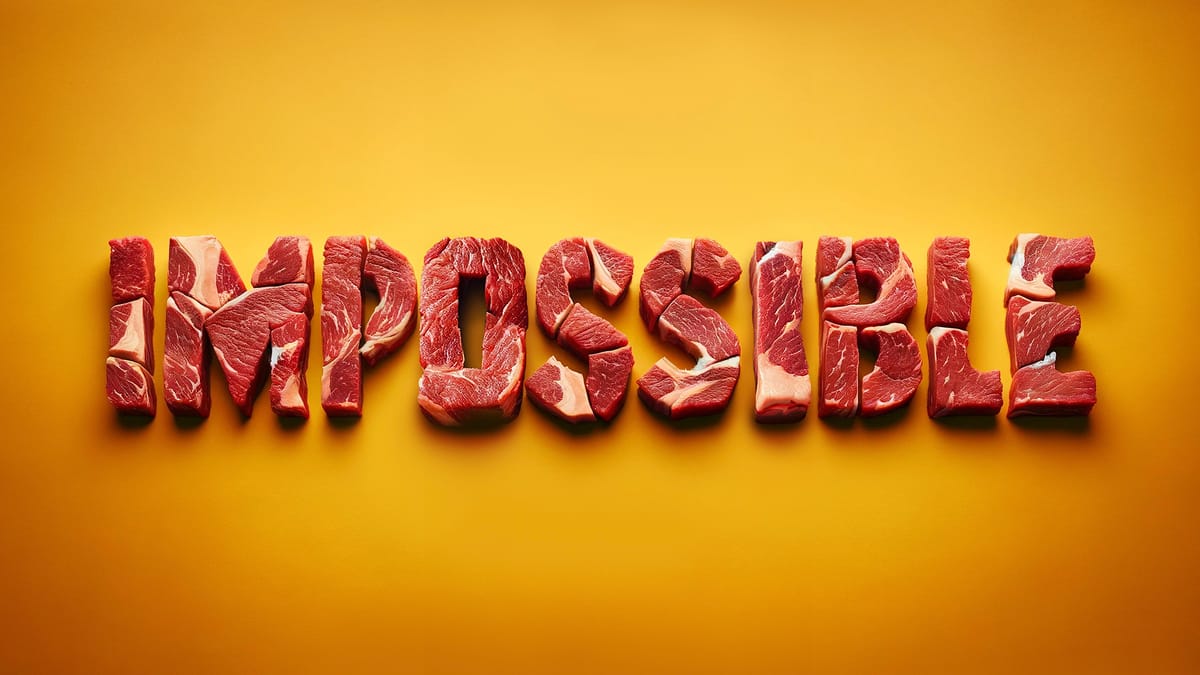
The rebrand to red meaty meatness is highly crafted and resolves some long standing brand contradictions, but the big question is whether going all in on a meat parity strategy will drive consumers to pick up Impossible.
With the plant-based meat in double-digit decline year on year across major markets, the key players need to get the category back to growth. Beyond Meat’s attempted pivots to health were met with a collective yawn, so Peter McGuiness, Leslie Sims and their teams at Impossible knew they had to do something bold to turn things around.
Now after months of teasing us with trucker hats and a war on wokeness that would make Ron DeSantis proud, we can finally see the results for ourselves. The design execution is easy to decode and they’ve made a bold strategic bet, but is it the right one? Let’s dive in.
From Shock & Awe to Retro Comfort
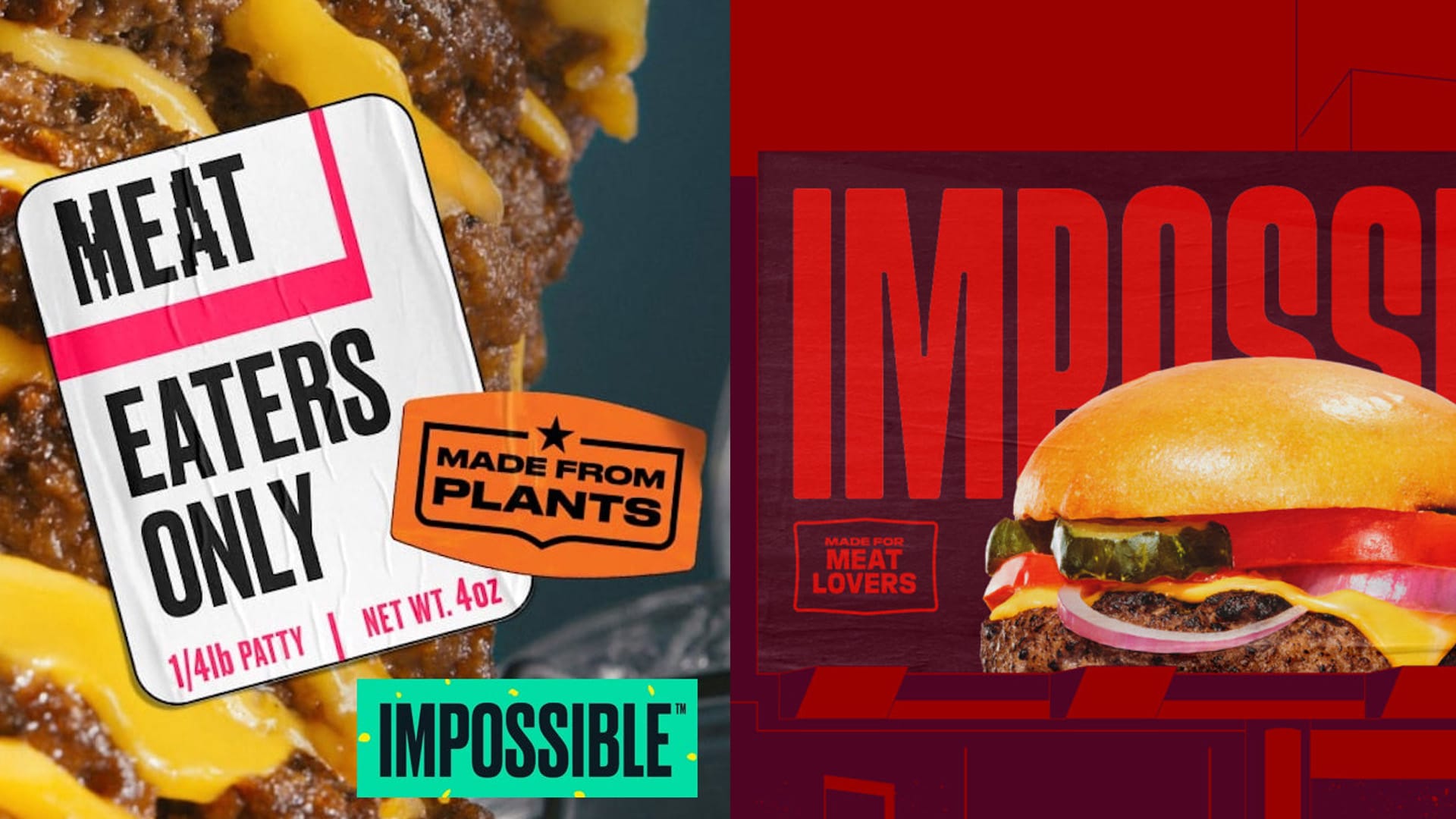
The brief to Impossible’s design agency was clearly to BFF meat lovers, drive stand-out, and bring appetite appeal to the fore to get Impossible into more shopping trolleys. The agency delivered this by dropping the activist shock and awe codes of the past and wrapping the brand in a familiar, meaty retro comfort of a butcher shop. The level of craft has designers swooning over forks hidden in the negative space of the logo animation and the 70s feels of flares in the custom typeface.
This new execution has at least three major benefits for the brand. It resolves the schizophrenia of its recent “For Meat Eaters Only” campaign delivered from a green pedestal. Impossible is now single mindedly meaty. It gets the messaging hierarchy right: taste first, health benefits second, with animal and plant themes rightfully demoted to tertiary claims rather than being at the heart. Finally the food trucks and highly saturated images of sausages on a stick make it clear that the brand is about food culture, not technology.
To quote Peter McGuiness in a recent CNBC interview: “If you happen to be worried about animal welfare and plant welfare that’s great too, but first and foremost we’re a food company making delicious and nutritious food.” This is a big change, and one that required significant leadership to push through.
Building on instinct or insight

The execution we see before us today all started with Impossible’s brief to their agency. That brief required Impossible to make some definitive choices about their target and their positioning to that target. Many subjective opinions will arise among industry insiders and consumers as to whether they like the design direction or not, but the more important question to ask is: have they backed the right strategy in their choice of target and position?
Target. A challenger brand in any category has to be super clear on who their consumer is and the category problem they are resolving for them. This segment needs to be significant enough to drive scale, but open enough to change for the challenger’s limited resources to have a chance of moving the needle. Impossible has apparently decided to go for “everyone” as their target, trying to take their brand from an effectively vegan/vegetarian early adopter base to the mainstream meat lover.
This takes the focus off a large early majority of flexitarians who are key to building scale and sustaining the category until the late majority of die-hard meat lovers skeptical of change comes on board, or simply shrinks due to generational shifts. As well funded as Impossible is, with $2bn raised over the past decade, they are dwarfed by conventional meat. JBS, the Brazilian meat processor, generates that much in revenue by itself every 10 days. Is Impossible spreading its resources too thin too early by trying to be for everyone?
Position. Between target and position comes the all important development of consumer insight. We want to see a position from a compelling consumer insight as to why Impossible is a superior successor to meat to bring to your family dinner table, not just more of the same with less cholesterol. What we see from the work so far seems to be “we’re just as meaty as your animal meat.” As we’ve pointed out before, a parity strategy will not drive behavior change because it lacks a compelling reason to switch, especially if that audience does not place much value on the secondary and tertiary benefits of your product.
The peril of over-burgering
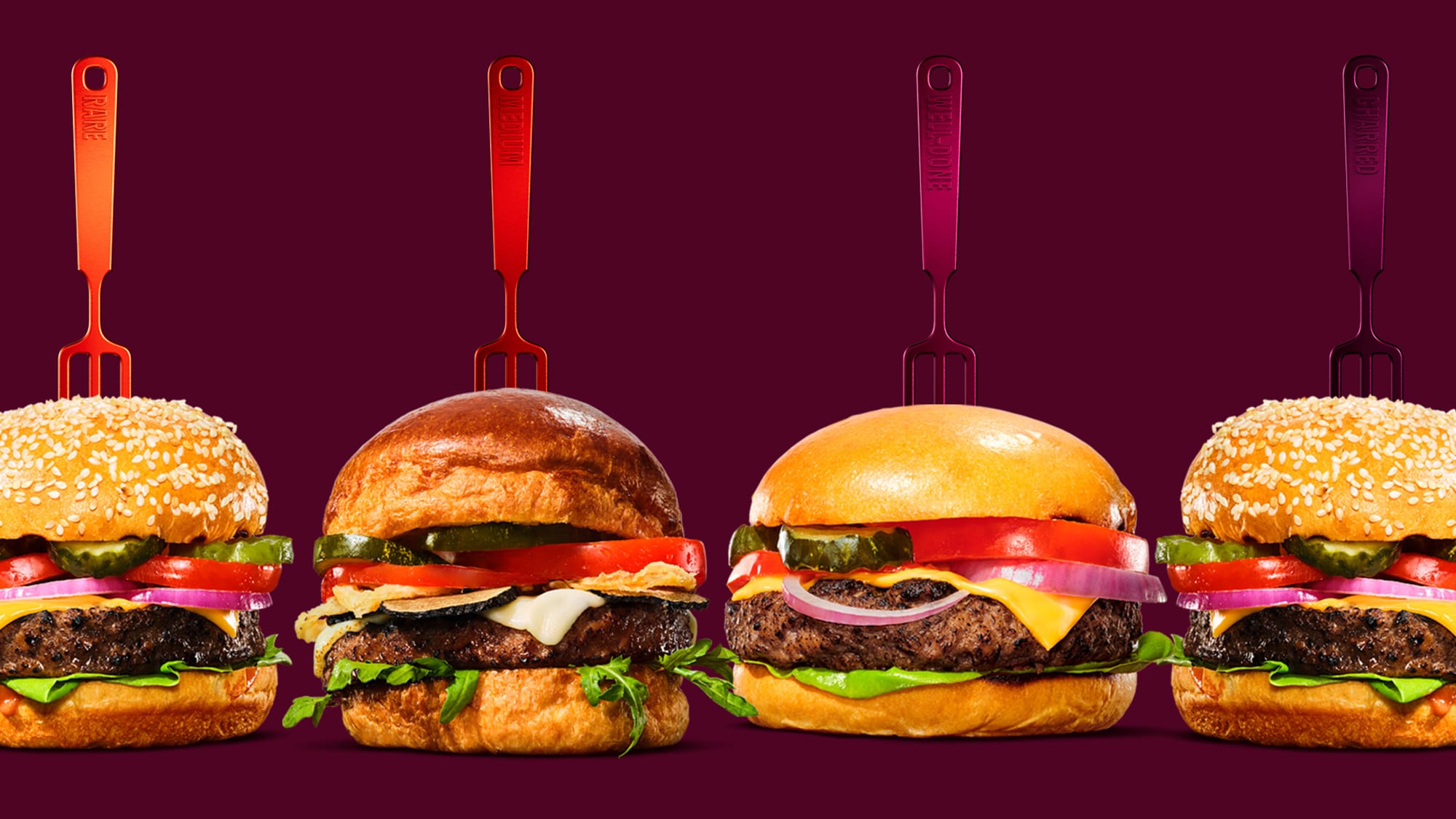
The targeting and positioning choices made by Impossible have led them to an execution that is, to borrow Leslie Sims own term, over-burgered. We mean this in two ways. First, the design codes of meatier than meat red also cue the universal language of fast food from McDonald’s and Coca-Cola to KFC and Jollibee. This plays into attacks by the meat industry that paint plant-based options as ultra-processed and unhealthy, messages that may concern flexitarians.
Second, the focus on “bleeding like beef” continues to box Impossible into a narrow burger territory, sidelining the rest of the portfolio of chicken, pork and countless formats and meal occasions they could be part of. Perhaps there was an opportunity to turn the category on its head by, for example, owning an emotional territory in a Liquid Death-esque way, instead of defaulting to a familiar version of the past.
Will it be Impossible for dinner?
We applaud the team at Impossible for seeing they needed to make a significant change, bringing consumer leadership to the fore and not being afraid to make some big calls, executed in a bold way. There is nothing more guaranteed to send you to the consumer goods graveyard than bland.
The rebrand so far has been limited to a logo and pack reveal, a trade show, and website. It’s gotten the industry talking, but the big test as to whether they’ve made the right calls will be the consumer push that is no doubt coming for grilling season (a campaign by Wieden is being teased for the end of April).
Expect an immediate spike in sales that comes from a brand spending a lot of money and making a lot of noise to get noticed. Wait and see if that translates into sustained consumer adoption and continual recruitment to the brand.
We’ll definitely be watching, and hope to see a more compelling reason to do so with some Impossible nachos in hand.



